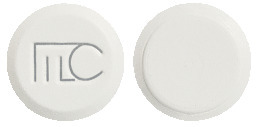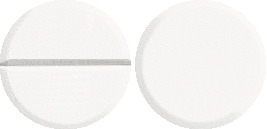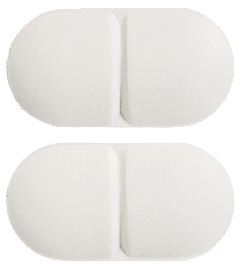What is in this leaflet
This leaflet answers some common questions about AMISOLAN.
It does not contain all of the available information. It does not take the place of talking to your doctor or pharmacist.
All medicines have benefits and risks. Your doctor has weighed the risks of you taking AMISOLAN against the benefits they expect it will have for you.
If you have any concerns about taking this medicine, talk to your doctor or pharmacist.
Keep this leaflet with your medicine. You may need to read it again.
What AMISOLAN is used for
AMISOLAN is used to treat symptoms of schizophrenia.
Schizophrenia is a condition whichaffects the way you think, feel and/or act. Schizophrenia may cause symptoms such as hallucinations (eg hearing, seeing or sensing things which are not there), delusions, unusual suspiciousness, emotional and social withdrawal. People with schizophrenia may also feel depressed, anxious or tense.
AMISOLAN belongs to a group of medicines called antipsychotics.
Your doctor may have prescribed AMISOLAN for another reason.
Ask your doctor if you have any questions about why AMISOLAN has been prescribed for you.
AMISOLAN must not be taken by children up to the age of puberty. There is limited information on the use of AMISOLAN in adolescents and its use is not recommended from puberty to the age of 18 years. If you are not yet 18 years of age, ask your doctor if AMISOLAN is right for you.
AMISOLAN is available only with a doctor's prescription.
Before you take AMISOLAN
When you must not take it
Do not take AMISOLAN if you are allergic to medicines containing amisulpride or any of the ingredients listed at the end of this leaflet.
Some of the symptoms of an allergic reaction may include skin rash, itching or hives, swelling of the face, lips or tongue which may cause difficulty in swallowing or breathing, wheezing or shortness of breath.
Do not take AMISOLAN if you are taking the following medicines:
- medicines used to treat irregular heart rhythm such as quinidine, disopyramide, amiodarone and sotalol
- cisapride
- antibiotics such as erythromycin and pentamidene, given as an injection into the veins
- levodopa, a medicine used in Parkinson’s disease
- thioridazone, an antipsychotic
- methadone, medicine used to treat pain or addiction.
Do not take AMISOLAN if you are breastfeeding or planning to breastfeed.
Do not take AMISOLAN if the expiry date (Exp.) printed on the pack has passed.
Do not take AMISOLAN if the packaging is torn or shows signs of tampering.
Do not take AMISOLAN if you have or have had any of the following medical conditions:
- phaeochromocytoma, a rare tumour of the adrenal glands which sit near the kidneys
- tumour of the pituitary gland, a small gland at the base of the brain
- breast cancer
- liver disease.
Before you start to take it
Tell your doctor if:
- you have had an allergic reaction to any medicine which have taken previously to treat your current condition.
- any other substances, such as foods, preservatives or dyes
- you suffer from lactose intolerance because AMISOLAN tablets contain lactose.
Tell your doctor if you are pregnant or plan to become pregnant. AMISOLAN is not recommended for use in pregnancy. Your doctor will discuss the risks and benefits of taking AMISOLAN during pregnancy. Newborns and mothers who have taken AMISOLAN during pregnancy need to be carefully monitored.
Tell your doctor if you are breastfeeding or wish to breastfeed. Your doctor will discuss the risks and benefits of taking AMISOLAN when breastfeeding.
Tell your doctor if you have any medical conditions, especially the following:
- kidney or liver disease, Parkinson’s disease or seizures
- problems with the heart and blood vessels
- a history of blood clots
- hyperglycaemia (high sugar levels in the blood) or a family history of diabetes. Your doctor may recommend monitoring your blood sugar levels while you are taking AMISOLAN.
- suffer from dementia
- mental/mood changes or suicidal thoughts. Patients (and care givers of patients) need to monitor for any worsening of their condition and/or the development of thoughts of suicide, suicidal behaviour or thoughts of harming themselves. Seek medical advice immediately if these symptoms present
- risk factors for stroke
- history or family history of breast cancer.
Your doctor may want to take special care if you have any of these conditions.
If you have not told your doctor about any of the above, tell them before you start taking AMISOLAN.
Taking other medicines
Tell your doctor if you are taking any other medicines, including any that you buy without a prescription from a pharmacy, supermarket or health food shop.
Some medicines may be affected by AMISOLAN, or may affect how well it works. These include:
- medicines used to treat irregular heart rhythm such as quinidine, disopyramide, amiodarone and sotalol
- other medicines used to treatheart problems such as diltiazem,verapamil, clonidine, digoxin anddrugs known as beta blockers(e.g. propranolol)
- intravenous amphotericin B, ananti-fungal given by injection into the veins
- other antipsychotics such asthioridazine, chlorpromazine,trifluperazine, pimozide,haloperidol, imipramine andlithium
- diuretics
- stimulant laxatives
- glucocorticosteriods
- diagnostics drug such as tetracosactides
- medicines taken for anxiety or to help you sleep
- medicines taken for depression
- some strong pain killers
- antihistamines, medicines to treat allergies, which cause drowsiness
- some medicines taken to control blood pressure.
Your doctor can tell you what to do if you are taking any of these medicines.
If you are not sure whether you are taking any of these medicines, check with your doctor or pharmacist. Your doctor and pharmacist have more information on medicines to be careful with or avoid while taking AMISOLAN.
How to take AMISOLAN
How much to take
Your doctor will tell you how many tablets you need to take each day and when to take them. This depends on your condition and whether or not you are taking any other medicines. The dosage is adjusted for each individual and can range from 50 mg a day up to 800 mg a day. In some cases your doctor may increase the dose to 1200 mg a day.
Follow all directions given to you by your doctor and pharmacist carefully.
Do not take more than the dose your doctor has recommended.
How to take AMISOLAN
Swallow the tablets whole with a glass of water.
If you forget to take AMISOLAN
If you forget to take your medicine, take your dose as soon as you remember.
Do not take a double dose to make up for the dose you missed.
If you are not sure what to do, ask your doctor or pharmacist.
How long to take AMISOLAN for
It is important that you do NOT stop taking AMISOLAN unless your doctor tells you. Do not stop taking AMISOLAN just because you feel better. It is very important to continue AMISOLAN because it will help you stay well.
Keep taking AMISOLAN for as long as your doctor recommends.
If you take too much AMISOLAN (overdose)
Immediately telephone your doctor, or the Poisons Information Centre (telephone 13 11 26), or go to Accident and Emergency at the nearest hospital, if you think you or anyone else may have taken too much AMISOLAN. Do this even if there are no signs of discomfort or poisoning. You may need urgent medical attention.
If you take too much AMISOLAN, you may feel drowsy and have slurred speech.
While you are taking AMISOLAN
Things you must do
It is very important to continue taking AMISOLAN because it will help you stay well.
Before starting any new medicine, tell your doctor or pharmacist that you are taking AMISOLAN.
Tell all the doctors, dentists and pharmacists who are treating you that you are taking AMISOLAN.
Tell your doctor immediately, or go to the nearest hospital, if you have any of the following suicidal thoughts or mental/mood changes:
- thoughts or talk of death or suicide
- thoughts or talk of self-harm or harm to others
- any recent attempts of self-harm
- increase in aggressive behaviour, irritability or agitation
- depressed mood or worsening of depression.
Occasionally, the symptoms of depression may include thoughts of suicide or self-harm. These symptoms may continue to get worse during the early stages of treatment until effect of the medicine becomes apparent. All mentions of suicide or violence must be taken seriously.
Visit your doctor regularly so they can check on your progress.
Things you must not do
Do not use AMISOLAN to treat any other conditions unless your doctor tells you to.
Do not give AMISOLAN to anyone else, even if they have the same condition as you.
Things to be careful of
Be careful driving or operating machinery until you know how AMISOLAN affects you. AMISOLAN may cause drowsiness, dizziness or light headedness in some people. If any of these occur, do not drive, operate machinery or do anything else that could be dangerous.
Be careful if you are elderly or unwell. Some people may experience side effects such as drowsiness, confusion, dizziness and unsteadiness, which may increase the risk of a fall.
Be careful when drinking alcohol while taking AMISOLAN the effects may be worse. It is NOT recommended that you drink alcohol while taking AMISOLAN.
Be careful while taking antihistamines, sleeping tablets or tablets to relieve pain while taking this medicine. AMISOLAN can increase drowsiness caused by medicines affecting your nervous system.
Side effects
Tell your doctor or pharmacist as soon as possible if you do not feel well while you are taking AMISOLAN.
Like all other medicines, AMISULPRIDE may have unwanted side effects in some people. Sometimes they are serious, most of the time they are not. You may need medical treatment if you get some of the side effects. Some side effects are dose related, so it is important that you never exceed your prescribed dose.
Do not be alarmed by this list of possible side effects. You may not experience any of them.
Ask your doctor or pharmacist to answer any questions you may have.
Tell your doctor if you notice any of the following and they worry you:
- drowsiness
- weight gain
- dizziness
- increased appetite
- nausea
- vomiting
- constipation
- dry mouth
- insomnia
- anxiety
- agitation
- problems with orgasm.
These are the most common side effects of AMISOLAN.
Some people may feel dizzy in the early stages of treatment, especially when getting up from a lying or sitting position. This side effect usually passes after taking AMISOLAN for a few days.
Sometimes trembling, noticeable muscle stiffness or spasm, slowness of movement, excess saliva, restlessness, an overwhelming urge to move and either distress or movements such as pacing, swinging of the legs while seated, rocking from foot to foot, or both can occur. This will usually be reduced if your dose of AMISOLAN is lowered by your doctor or if your doctor prescribes you an additional medicine.
High blood sugar has been reported in patients taking AMISOLAN. Symptoms of high sugar levels in the blood include passing more urine than normal, persistent excessive thirst, increased appetite with a loss in weight and weakness.
Tell your doctor immediately or go to Accident and Emergency at the nearest hospital if you notice any of the following:
- muscle twitching
- abnormal movements mainly of the face or tongue
- fever
- unexplained infections
- faster breathing
- sweating
- muscle stiffness
If this occurs, stop taking AMISOLAN immediately and contact your doctor.
After prolonged use in women, medicines of this type can cause:
- breast pain
- milk secretion
- an absence of their monthly period
- changes in the regularity of their periods
Tell your doctor if your monthly periods are absent for six months or more.
After prolonged use in men, medicines of this type can cause breast enlargement or impotence.
Incidences of abnormal liver function have been occasionally reported.
Other side effects not listed above may also occur in some patients. Tell your doctor if you notice anything that is making you feel unwell.
After using AMISOLAN
Storage
Keep AMISOLAN where children cannot reach it. A locked cupboard at least one-and-a-half metres above the ground is a good place to store medicines.
Keep your tablets in the blister pack until it is time to take them. If you take the tablets out of the blister pack they may not keep well.
Keep your tablets in a cool dry place where the temperature stays below 30°C.
Do not store AMISOLAN or any other medicine in the bathroom or near a sink.
Do not leave AMISOLAN in the car or on window sills. Heat and dampness can destroy some medicines.
Disposal
If your doctor tells you to stop taking AMISOLAN, or your tablets have passed their expiry date, ask your pharmacist what to do with any that are left over.
Product description
What it looks like
AMISOLAN comes in 3 strengths of tablets:
- AMISOLAN 100 - White, round, flat tablets embossed MC on one side
- AMISOLAN 200 - White, round, flat scored on one side tablets
- AMISOLAN 400 - White, biconvex, capsule shaped tablets, scored on both sides.
The 100 mg, 200 mg and 400 mg strengths are available in pack sizes of 30, 60 and 90 tablets.
Ingredients
The active ingredient in AMISOLAN is amisulpride.
- each AMISOLAN 100 tablet contains 100 mg of amisulpride
- each AMISOLAN 200 tablet contains 200 mg of amisulpride.
- each AMISOLAN 400 tablet contains 400 mg of amisulpride.
The tablets also contain:
- microcrystalline cellulose
- hypromellose
- magnesium stearate
- lactose monohydrate
- sodium starch glycollate A.
The tablet contains sugars as lactose
The tablets do not contain gluten, sucrose, tartrazine or any other azo dyes.
Supplier
Southern Cross Pharma Pty Ltd
Suite 5/118 Church Street
Hawthorn, VIC 3122,
Australia
Australian registration numbers:
AMISOLAN 100
AUST R 234715
AMISOLAN 200
AUST R 234701
AMISOLAN 400
AUST R 234705
Date of preparation:
October 2018
Published by MIMS March 2019




 The following CIOMS frequency rating is used, when applicable: Very common ≥ 10%; Common ≥ 1 and < 10%; Uncommon ≥ 0.1 and < 1%; Rare ≥ 0.01 and < 0.1%; Very rare < 0.01%; Not known (cannot be estimated from available data).
The following CIOMS frequency rating is used, when applicable: Very common ≥ 10%; Common ≥ 1 and < 10%; Uncommon ≥ 0.1 and < 1%; Rare ≥ 0.01 and < 0.1%; Very rare < 0.01%; Not known (cannot be estimated from available data).
